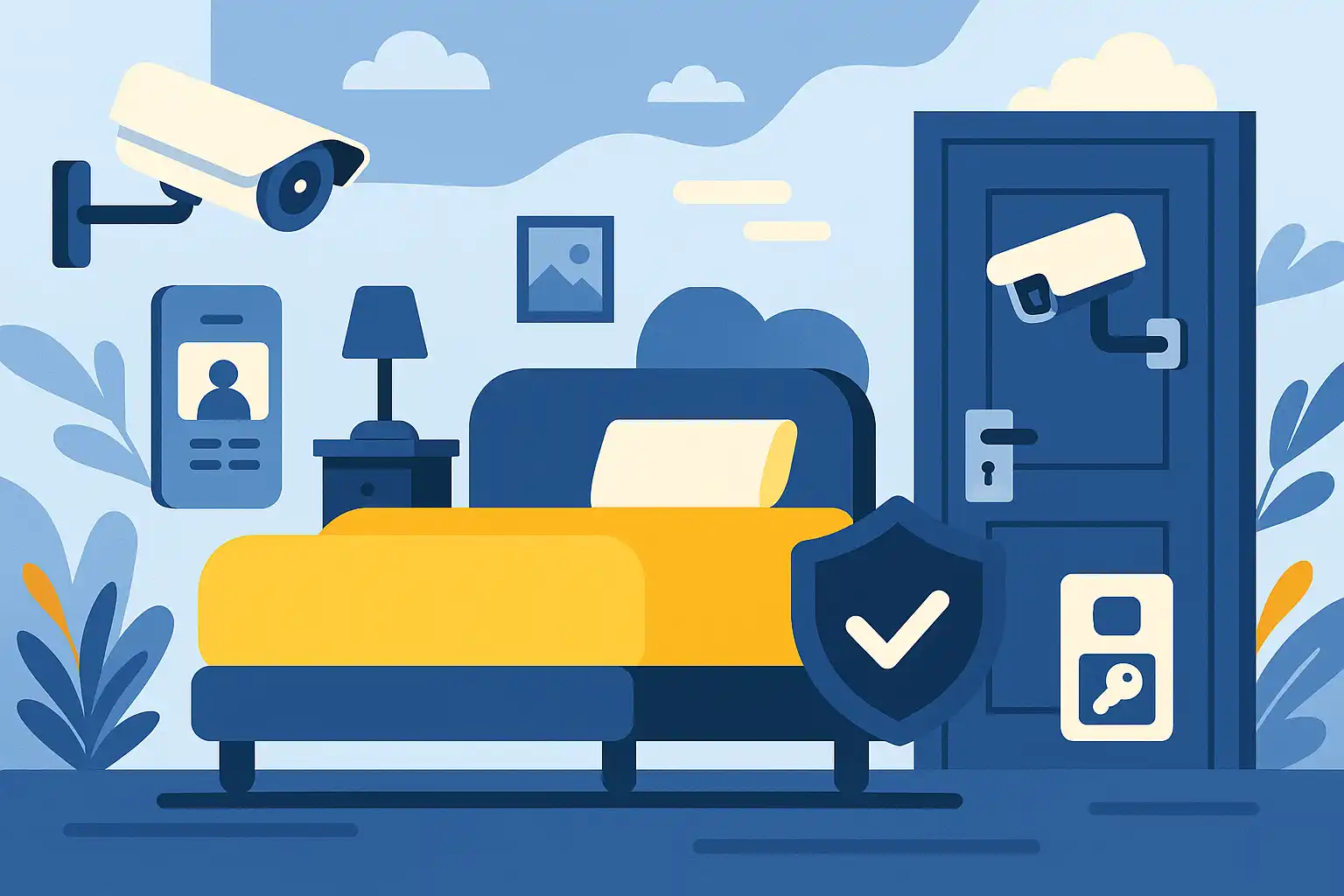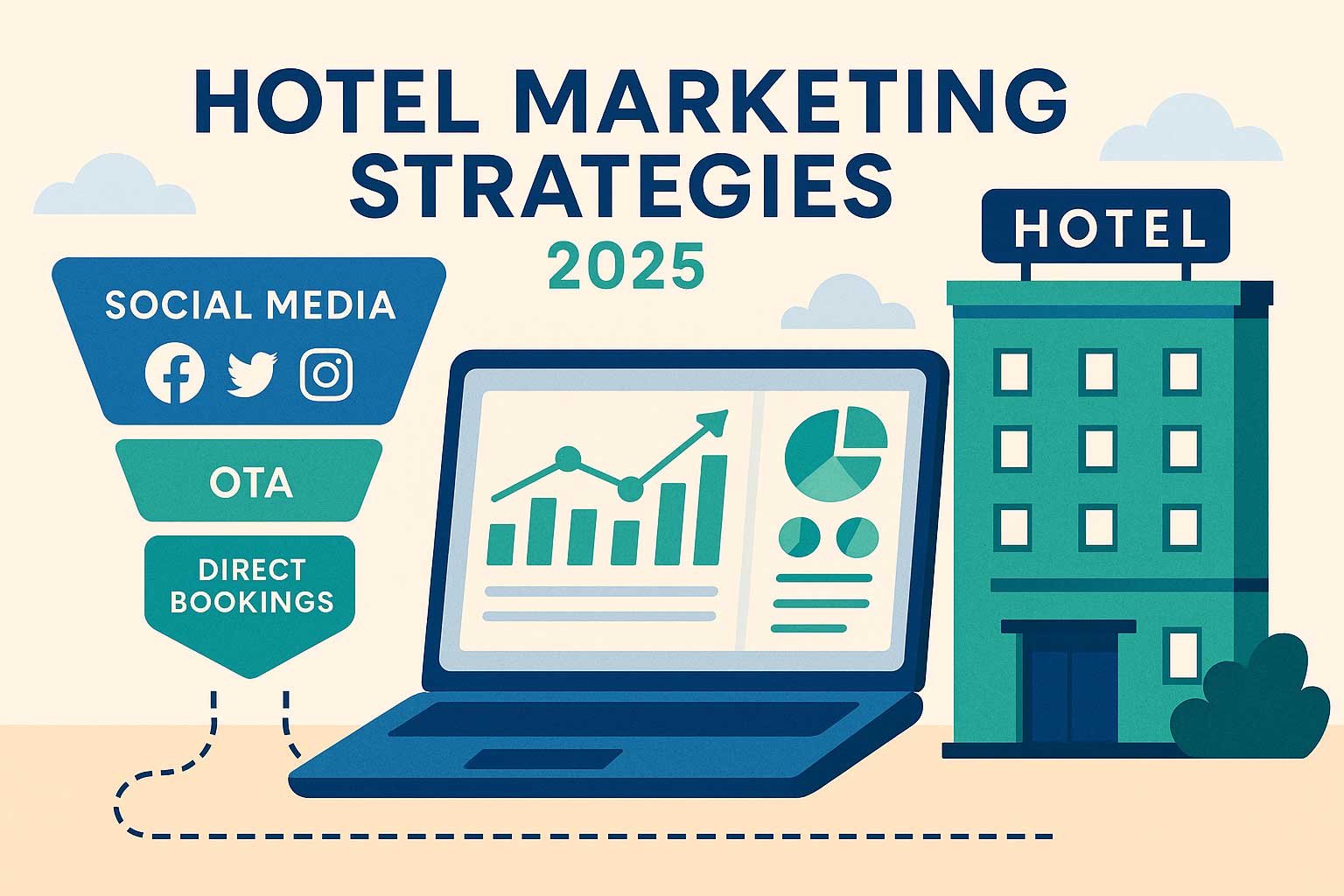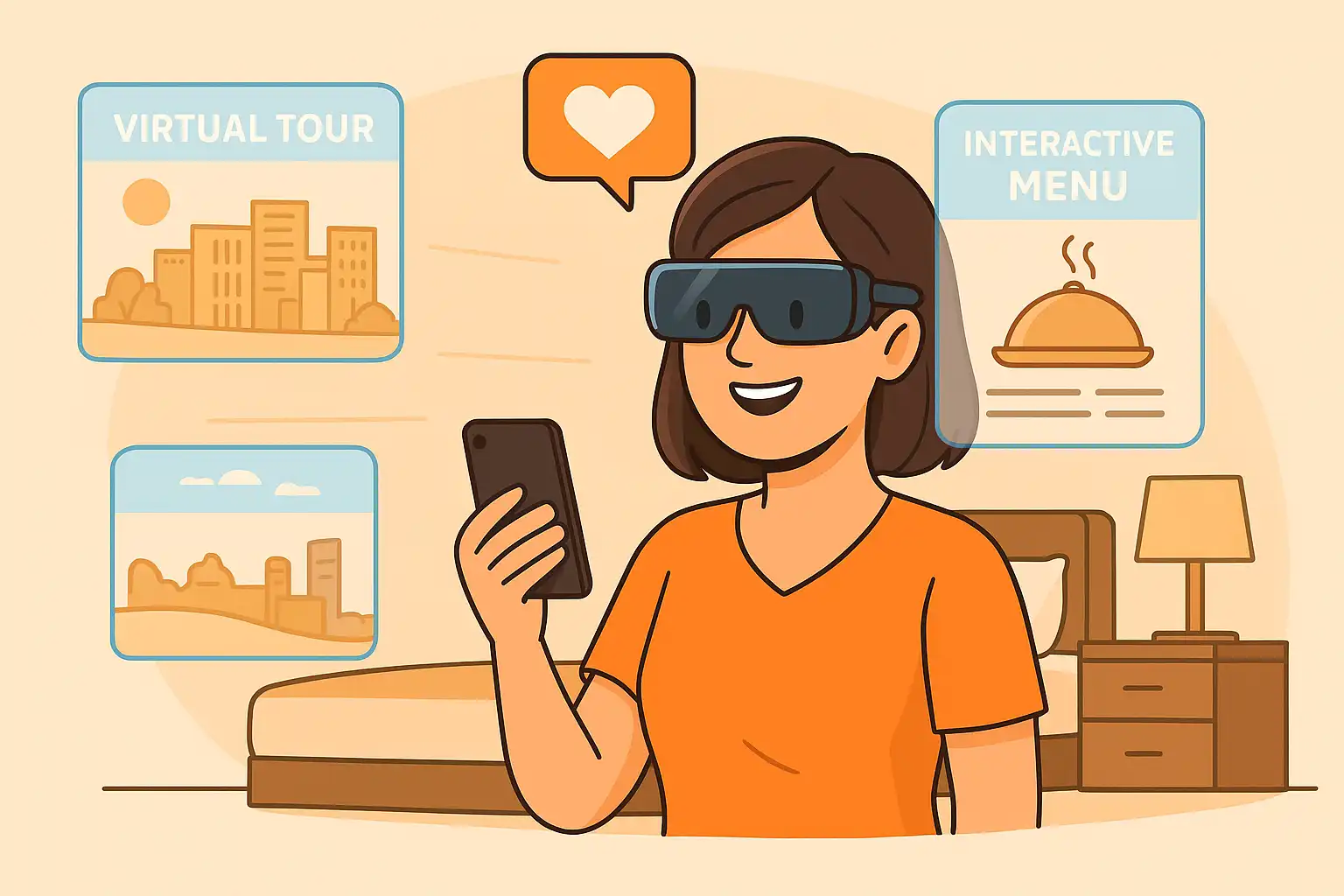AR in Hospitality: Guest Experiences Through Augmented Reality
Nov 7, 2025
 Mika Takahashi
Mika TakahashiPopular Categories
Hotel Technology & InnovationHotel Operations OptimizationDigital MarketingIndustry TrendsRevenue ManagementHospitality Industry
Popular Categories
Trending Post

Hotel Walk Letter Template: Professional Guest Communication

Online Travel Agents: What They Are and How They Work

Hotel Security Systems: Modern Protection Solutions

Hotel Advertising: Complete Guide to Boost Bookings and Revenue

25 Hotel Marketing Strategy Ideas for 2025: Complete Guide

AI Reservation Agent: Revolutionizing Hotel Booking and Guest Experience

PMS Communication: Streamlining Property Management Through Effective Guest Messaging
Table of contents
The hospitality industry is in the midst of a digital revolution, and augmented reality (AR) is at the heart of this exciting change. It’s quickly becoming a game changer, reshaping how hotels connect with guests and deliver truly unforgettable experiences. With AR in hospitality industry and VR technologies in the hospitality sector growing at an impressive rate—over 30% annually—AR is leading the way thanks to its accessibility and practical uses.
This isn’t just a passing trend; it’s becoming essential for hotels that want to keep up with evolving guest expectations and stand out in a crowded market. From virtual room previews that help guests make confident booking decisions to interactive hotel rooms that respond to their needs, augmented reality is transforming every step of the customer journey.

What is AR in the Hospitality Industry?
AR in hospitality industry is all about layering digital elements—like computer-generated images, interactive features, and useful information—right on top of the physical world. Unlike virtual reality, which transports you to a completely different environment, AR enhances the real world by adding context and interactivity that guests can access on their smartphones, tablets, or AR glasses.
Understanding the difference between AR and virtual reality is key. VR immerses users in a fully digital space, often used for virtual tours or staff training, while AR overlays helpful information onto existing surroundings. This makes AR especially handy for things like navigating a hotel, controlling room settings, or even translating signs in real time.
The AR in hospitality industry market is booming, growing around 34% each year, with expectations to hit $100 billion by 2026. This surge reflects big investments and strong confidence in AR’s ability to improve guest experiences across the board.
Most guests use smartphones and tablets to access AR experiences, making it easy for hotels to reach a broad audience without needing guests to buy special hardware. AR glasses are on the horizon, promising even smoother, hands-free interactions in the near future.
Key Applications of AR in Hotels and Hospitality
AR in the hospitality industry isn’t just about flashy tech—it’s delivering real solutions that enhance guest experiences and streamline hotel operations. From helping guests preview rooms before they arrive to guiding them through sprawling hotel properties, AR is proving its value in many practical ways.
Virtual Room Previews and Tours
One of the most powerful uses of AR is virtual room previews. Hotels like Marriott have embraced AR-powered 360-degree tours that let potential guests explore rooms, check out views, and get a feel for the space and amenities before booking.
These virtual depictions go beyond simple photos, allowing guests to interact with room settings, see different lighting scenarios, and even preview room service options. This technology is especially helpful for travelers booking stays in unfamiliar places, where understanding the physical environment and nearby attractions is crucial.
Studies show that virtual tours can boost booking rates by 20-30% and reduce cancellations and complaints. They’re also a great way for hotels to upsell premium rooms by letting guests experience the difference through immersive 3D views.
Destination marketers also benefit by showcasing not only hotel amenities but local attractions like hot springs, magic springs, and crystal falls, enriching the overall travel experience.
Interactive In-Room Experiences
Today’s hotel rooms are becoming interactive spaces where guests can control their environment through AR. Take the Eccleston Square Hotel, for example, which uses smart glass technology that lets guests adjust privacy settings, entertainment systems, and room conditions with AR-enabled controls.
AR simplifies traditional room controls by overlaying intuitive instructions and interfaces right on guests’ devices. Imagine scanning a thermostat to see how it works or using gesture controls to navigate entertainment options—making everything feel natural and hassle-free.
Voice-activated AR assistants like Angie by Nomadix take personalization further by acting as virtual concierges. They can suggest local spots to explore, adjust room settings based on your preferences, or provide instant access to hotel amenities without needing to call the front desk.
Even hotel staff benefit—housekeeping teams use AR checklists and reporting tools to maintain high service standards and operational efficiency.
Enhanced Dining and Restaurant Experiences
AR is also transforming dining by bringing menus to life. Companies like Kabaq create ultra-realistic 3D models of dishes that guests can view by scanning menu items, giving detailed insights into ingredients, preparation, and nutrition.
Domino’s, for example, offers an AR pizza preview feature that shows customers exactly what their customized pizza will look like before ordering. Similarly, Denny’s AR menus let diners interact with 3D meal representations, helping manage expectations and boosting satisfaction.
Some restaurants go even further, using projection mapping like Le Petit Chef to create immersive storytelling experiences during meals. These unique dining experiences not only entertain but also encourage guests to share their visits on social media, extending the restaurant’s marketing reach.
For international guests, AR menus break down language barriers by providing visual context and information about local culture and culinary traditions, deepening appreciation for regional specialties.
Navigation and Wayfinding
Large hotel properties can be tricky to navigate, but AR-powered wayfinding makes it easy. Guests can use their devices to get real-time, visual directions overlaid right onto their surroundings, guiding them to their rooms, restaurants, spas, and more.
This is especially useful in resorts and conference centers where traditional signs might not be enough. Point your phone in any direction, and AR can show nearby facilities, walking times, and step-by-step routes.
When combined with beacon technology, AR can automatically display relevant info as guests move through the hotel—like spa specials when nearby or business center hours when approaching.
In emergencies, AR navigation becomes even more critical, offering clear evacuation routes and guidance even in low-visibility situations.
Local Area Exploration
AR extends the guest experience beyond the hotel walls, helping travelers discover local attractions and culture. Apps like The World Around Me overlay information about nearby points of interest, historical sites, restaurants, and cultural venues directly onto real-world views.
In places rich with history, AR brings stories to life with virtual depictions of past events and architectural changes, accessible simply by pointing a device at landmarks.
Real-time translation features help guests overcome language barriers, translating signs, menus, and information into their preferred language instantly.
AR also supports sustainable tourism by reducing the need for printed materials and encouraging eco-friendly behaviors through real-time environmental data and recommendations.

Marketing and Guest Engagement Through AR
AR isn’t just about operations—it’s a powerful marketing tool that helps hotels build brand loyalty and engage guests in fun, memorable ways.
Gamification and Entertainment
AR gamification turns hotel stays into interactive adventures. The Singapore Tourism Board, for example, has launched AR reward programs where guests hunt for hidden digital items throughout hotel properties, earning points redeemable for perks like room upgrades or local attraction tickets.
These AR games encourage guests to explore more of the hotel, increasing use of facilities and creating positive brand interactions.
By tapping into popular AR gaming trends, hotels attract younger, tech-savvy guests who expect these interactive experiences as standard.
Social media sharing of AR moments creates authentic marketing content, reaching potential guests through trusted personal networks.
Brand Experiences and Celebrity Encounters
Holiday Inn’s AR celebrity appearances let guests interact with virtual stars, creating buzzworthy moments that encourage repeat visits and word-of-mouth promotion.
Best Western’s Disney character experiences use AR to delight families, giving kids the chance to meet beloved characters throughout the hotel, while parents appreciate the added value.
Personalized AR marketing messages based on guest preferences make promotions feel thoughtful, not generic. Spa lovers might get invites to new treatments, and business travelers could access exclusive lounge features—all through AR.
Loyalty programs can integrate AR-exclusive content, rewarding frequent guests with unique experiences and keeping them engaged.
Business Benefits of AR Implementation
Beyond delighting guests, AR offers solid business advantages. Hotels that adopt AR report higher guest satisfaction and better review scores compared to those that don’t.
AR features like virtual tours help increase direct bookings by reducing reliance on online travel agencies, boosting profits by cutting commission fees.
Operational efficiencies improve as self-service AR tools reduce staff workload while maintaining service quality.
AR also drives revenue through upselling—when guests can see room upgrades, spa treatments, or dining options in vivid detail, they’re more likely to spend more.
Offering cutting-edge AR experiences helps hotels stand out, attracting tech-savvy travelers and guests looking for share-worthy moments.
Challenges and Implementation Considerations
Of course, adopting AR isn’t without challenges. High upfront costs for content creation and technical integration can be a hurdle.
Compatibility across different guest devices requires careful planning to ensure smooth experiences for everyone.
Staff need thorough training—not just on the technology itself but on how to help guests and promote AR features enthusiastically.
Keeping content fresh means ongoing updates, especially for promotions and local info.
Hotels must balance digital convenience with the human touch that defines hospitality, making sure AR enhances rather than replaces personal service.
Privacy is another concern; clear communication and robust security around data collection are essential to build guest trust.
Future Trends and Innovations in Hospitality AR
Looking ahead, hotel AR will become even smarter with artificial intelligence integration. Imagine hotel AR systems that predict guest needs, suggest dining based on preferences and weather, or adjust room settings automatically.
Wearable AR devices like glasses and contact lenses will soon replace smartphones for more natural, hands-free interactions.
Sustainability will also benefit, with AR helping reduce paper waste and providing real-time data on energy use and eco-friendly options.
Cross-platform compatibility will create seamless experiences across devices and hotels, letting guests carry their hotel AR preferences wherever they go.
Integration with Internet of Things devices will enable truly smart rooms that adapt automatically based on hotel AR-driven profiles and biometric data.
Advanced computer vision will let guests learn about any object simply by looking at it through hotel AR.

Getting Started with AR in Your Hotel
Starting your AR journey means careful planning and phased implementation. Begin by assessing your current tech infrastructure—Wi-Fi, network reliability, cloud storage, and integration with property management systems all matter.
Budget realistically for development, maintenance, staff training, and content updates. Many hotels find success by launching simple AR features first, then expanding based on guest feedback.
Decide whether to develop in-house or partner with AR specialists, depending on your expertise and goals.
Train staff thoroughly to ensure they’re excited and capable of supporting AR, emphasizing how it enhances guest service rather than replacing human connection.
Track ROI closely through guest feedback, booking data, and operational metrics to guide future investments.
Collaborate with other hotels and industry groups to share insights and avoid common pitfalls.
Conclusion
AR in the hospitality industry is redefining how hotels create value for guests and achieve business goals. From virtual tours that boost bookings to interactive rooms that anticipate needs, AR has moved from novelty to necessity.
By enhancing every part of the guest journey—personalized recommendations, seamless navigation, immersive dining, and engaging local exploration, AR helps hotels stand out, increase revenue, and build lasting loyalty.
As hotel AR technology advances with AI, wearables, and IoT integration, hotels that start now will be well-positioned to lead the future of hospitality.
The travel industry is at a turning point where guests expect digital convenience and personalized experiences like never before. Embracing hotel AR today means setting the standard for tomorrow and creating unforgettable stays that keep guests coming back.
